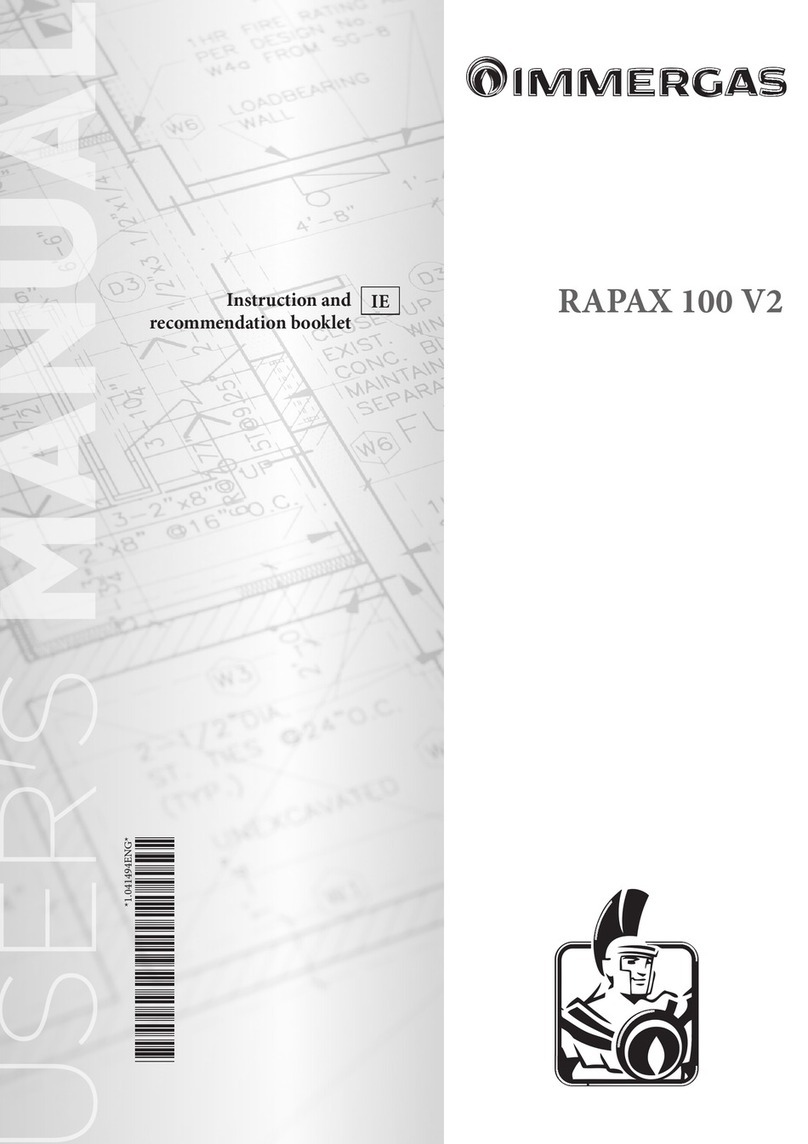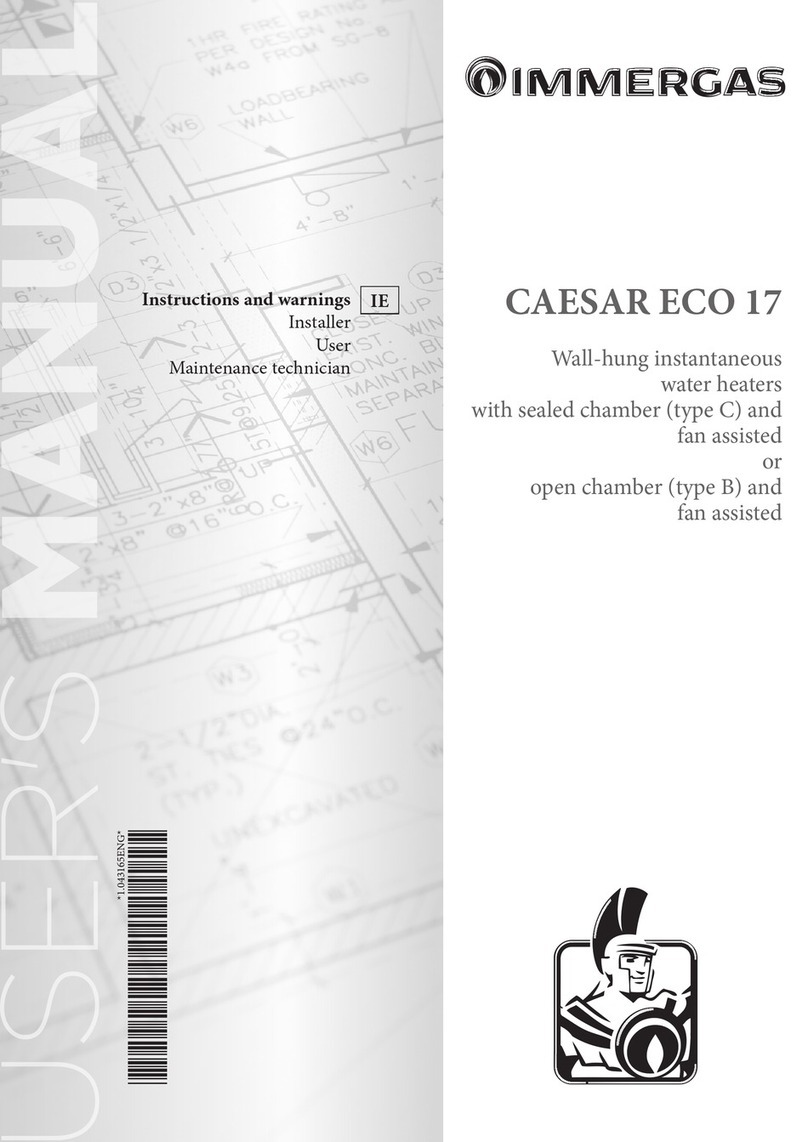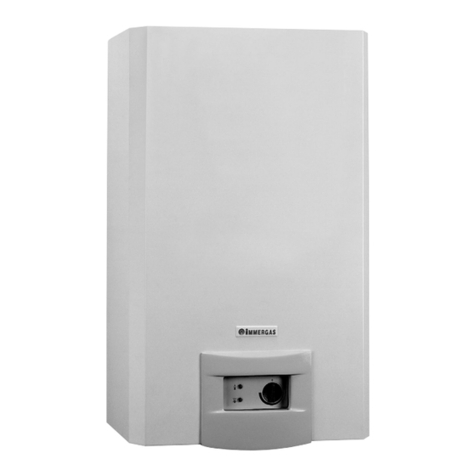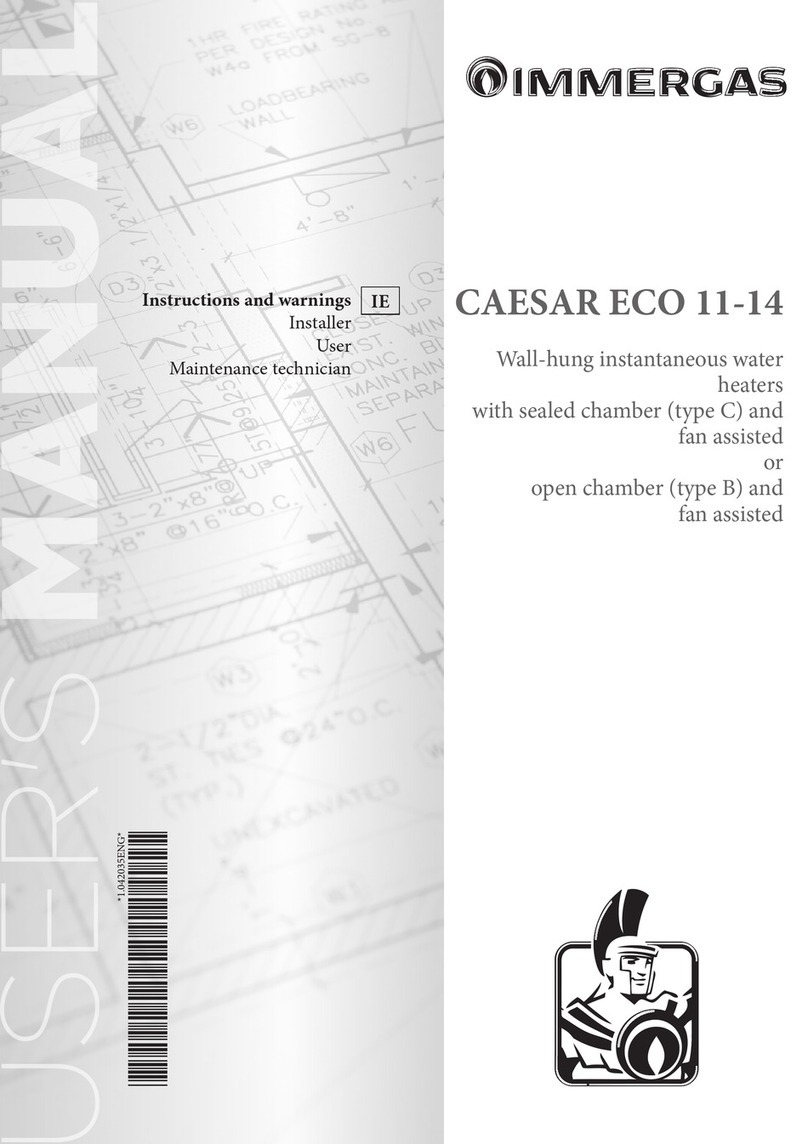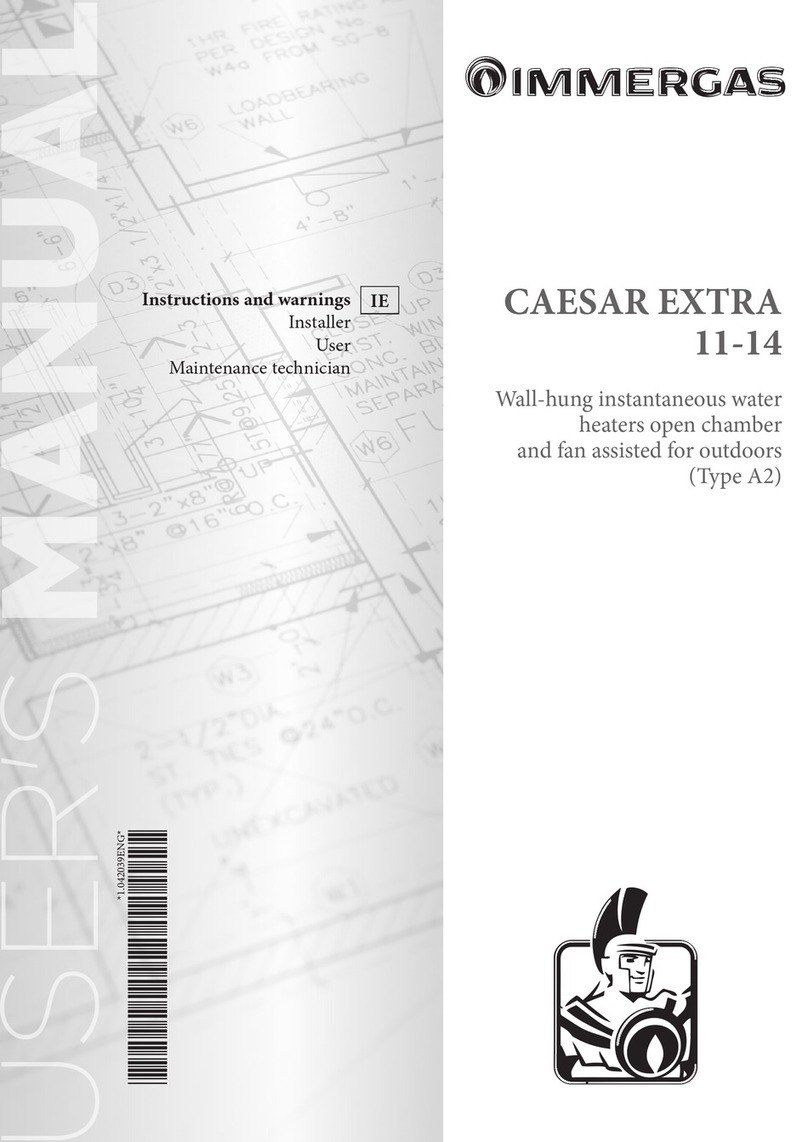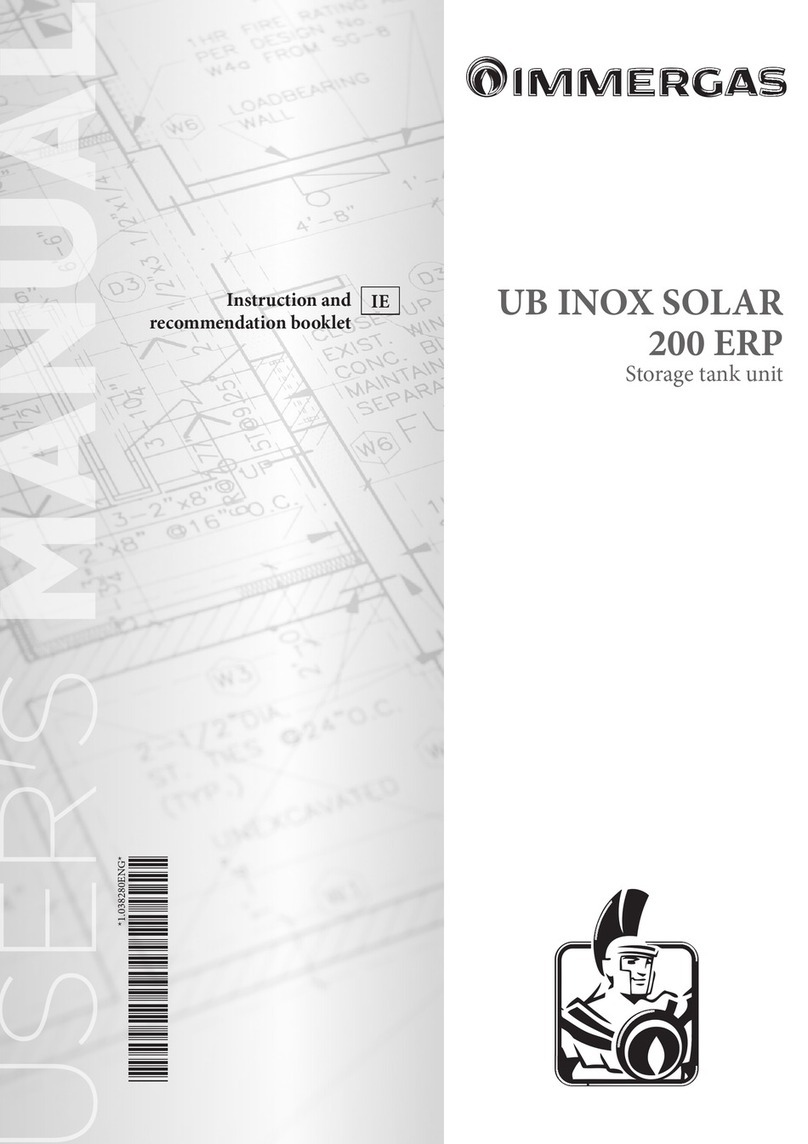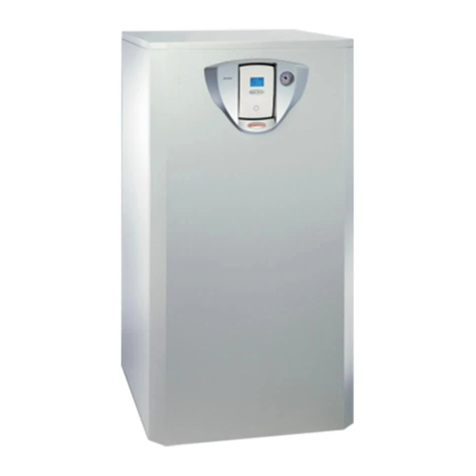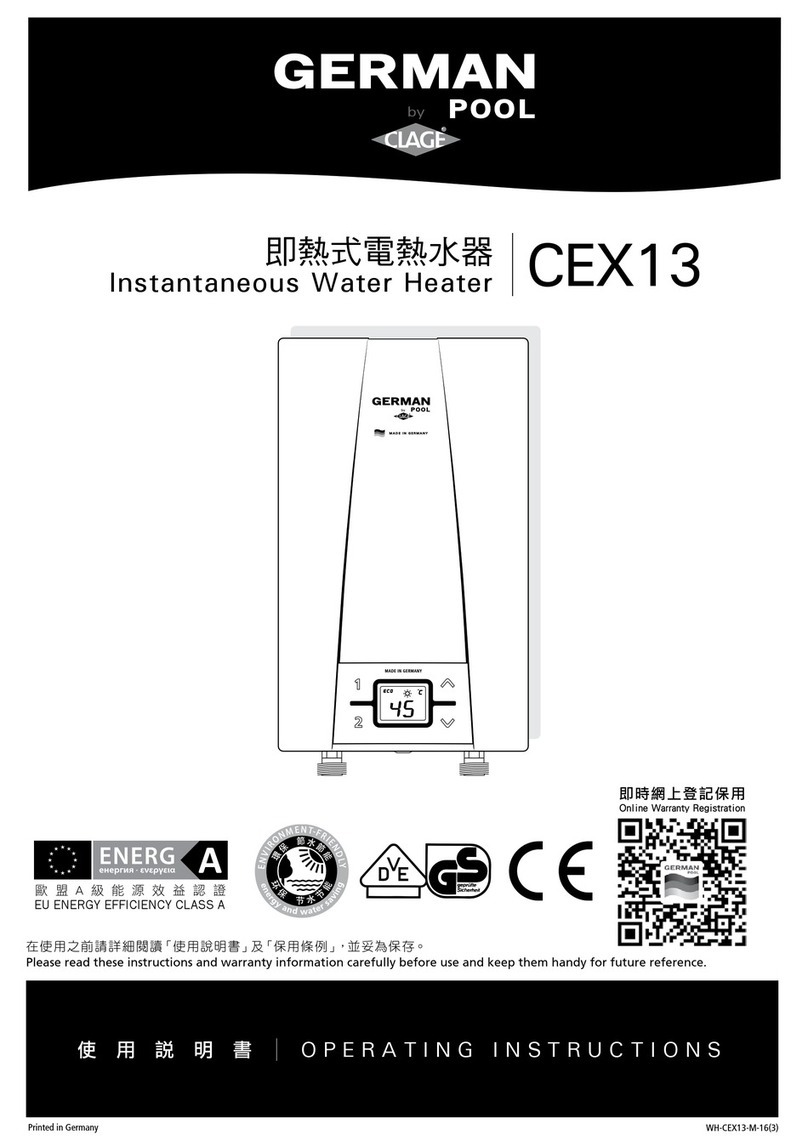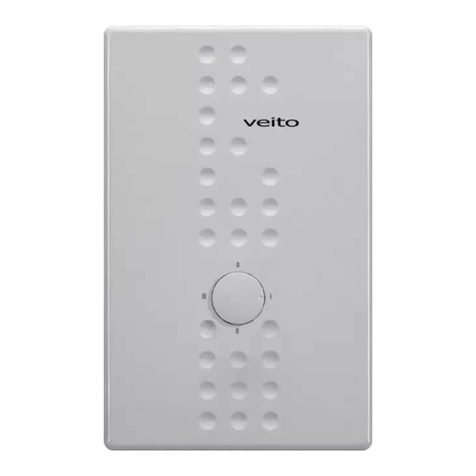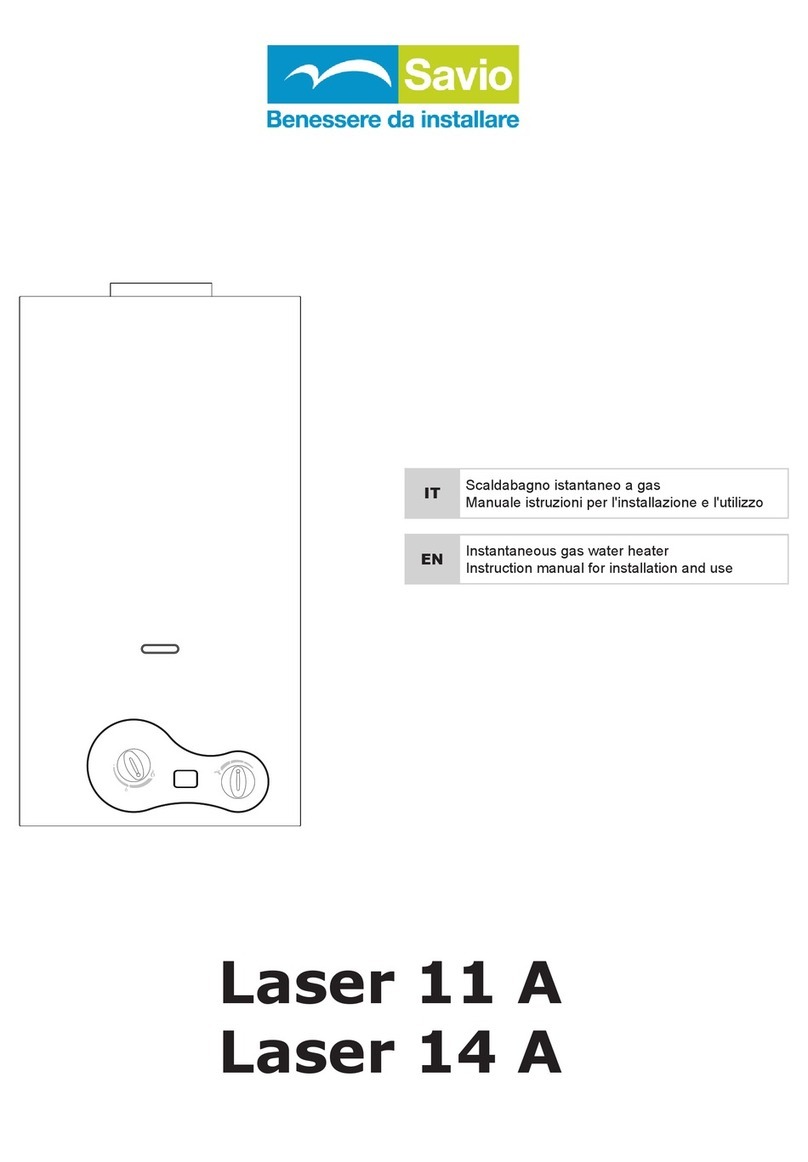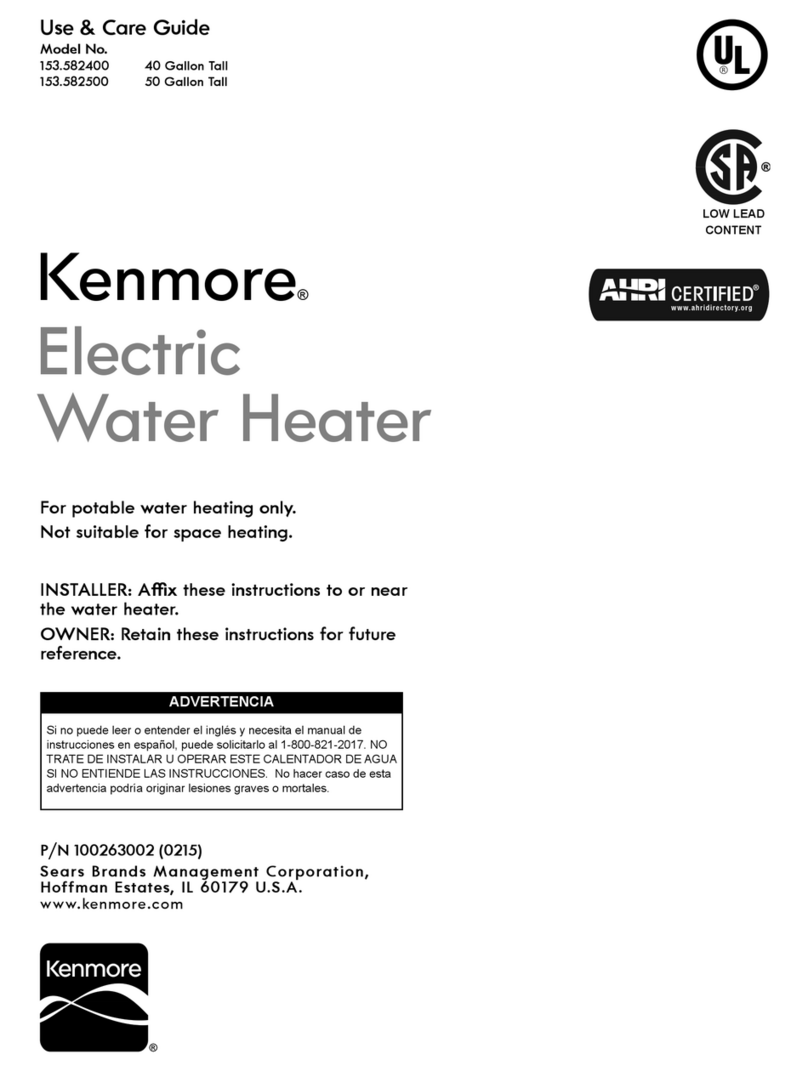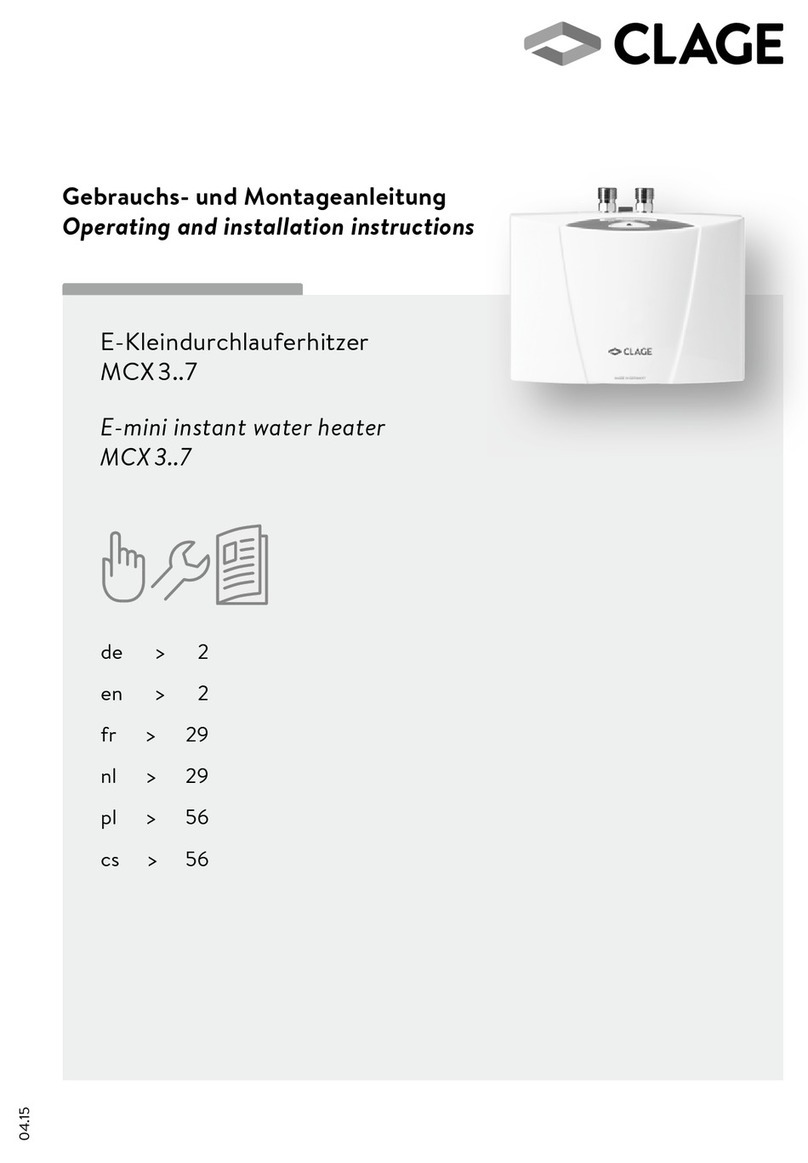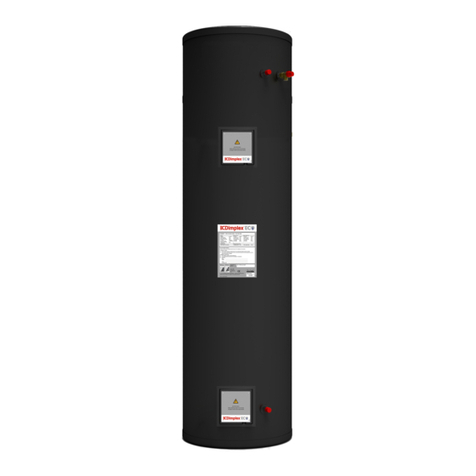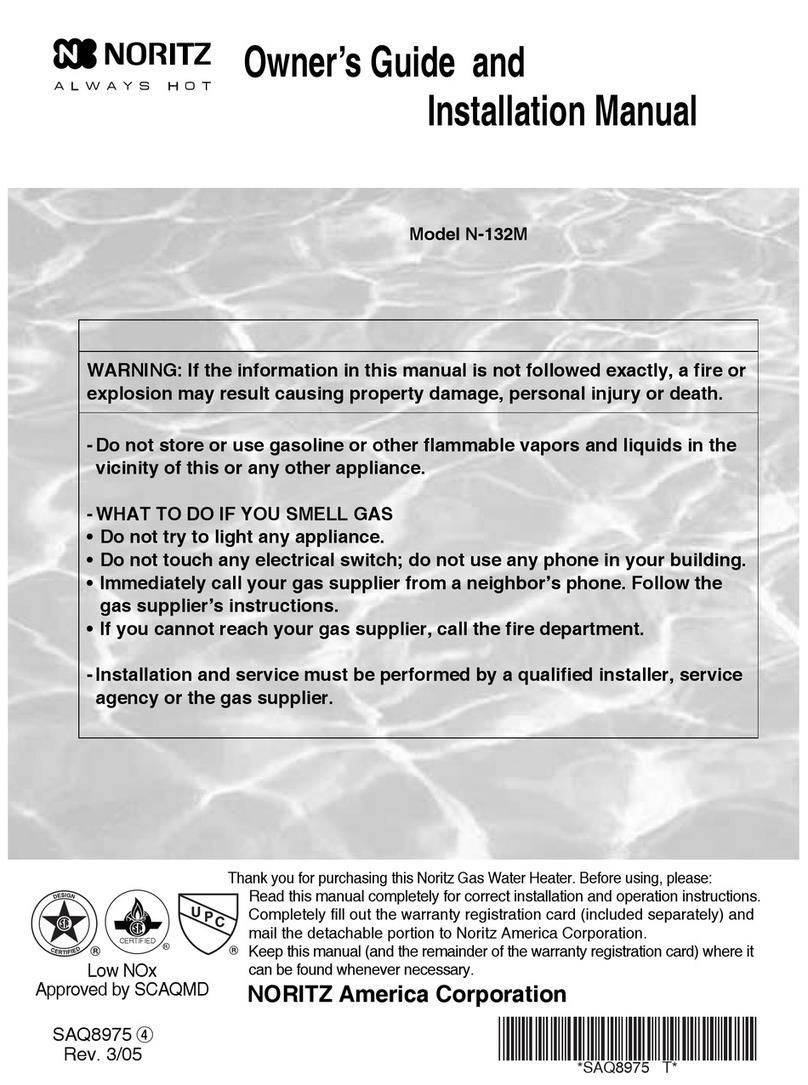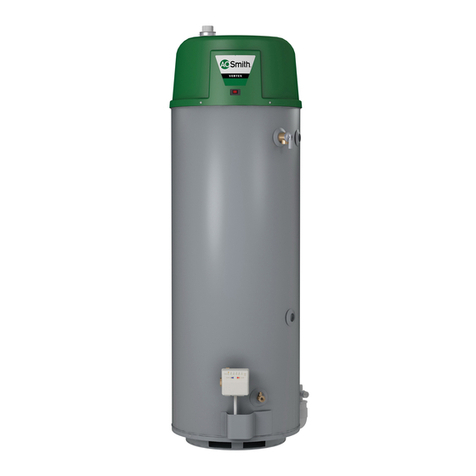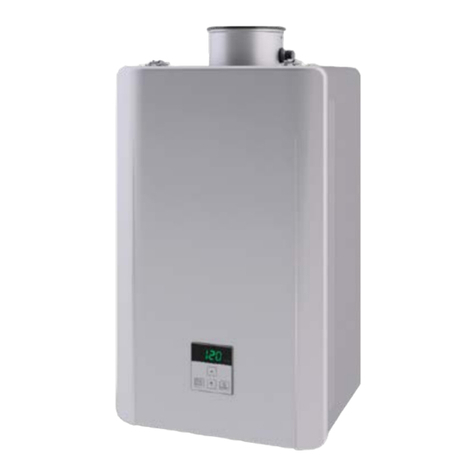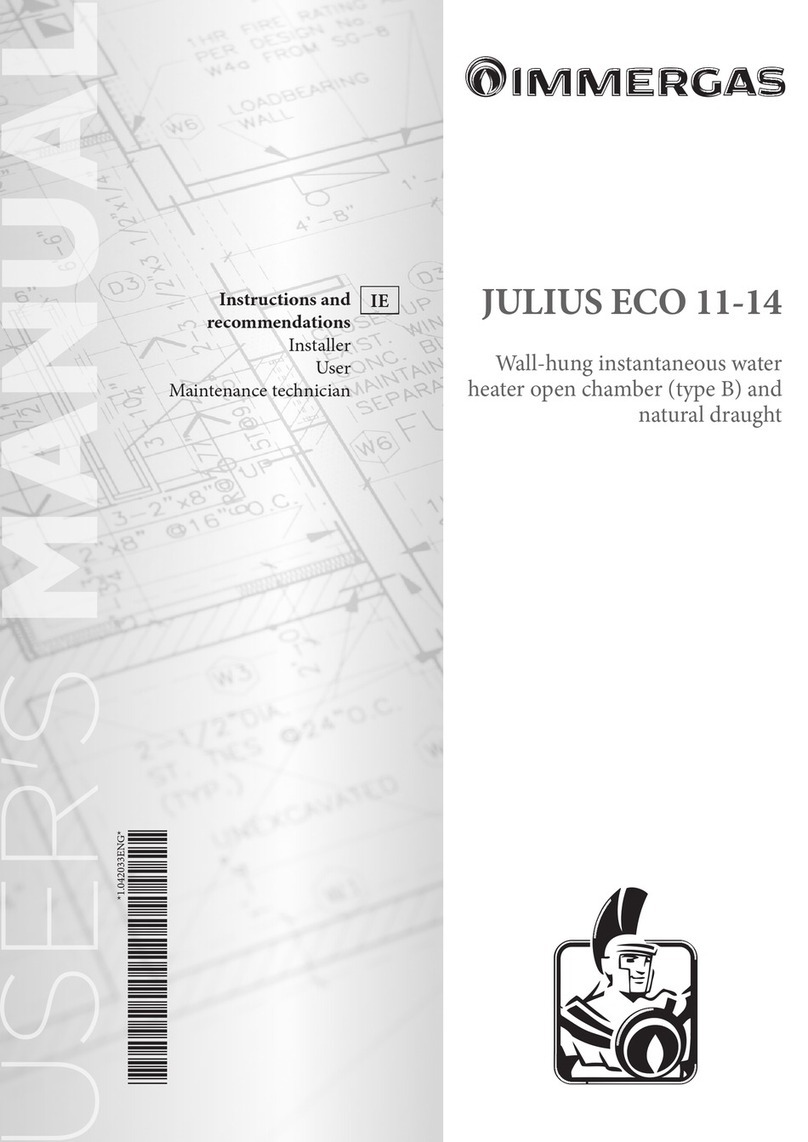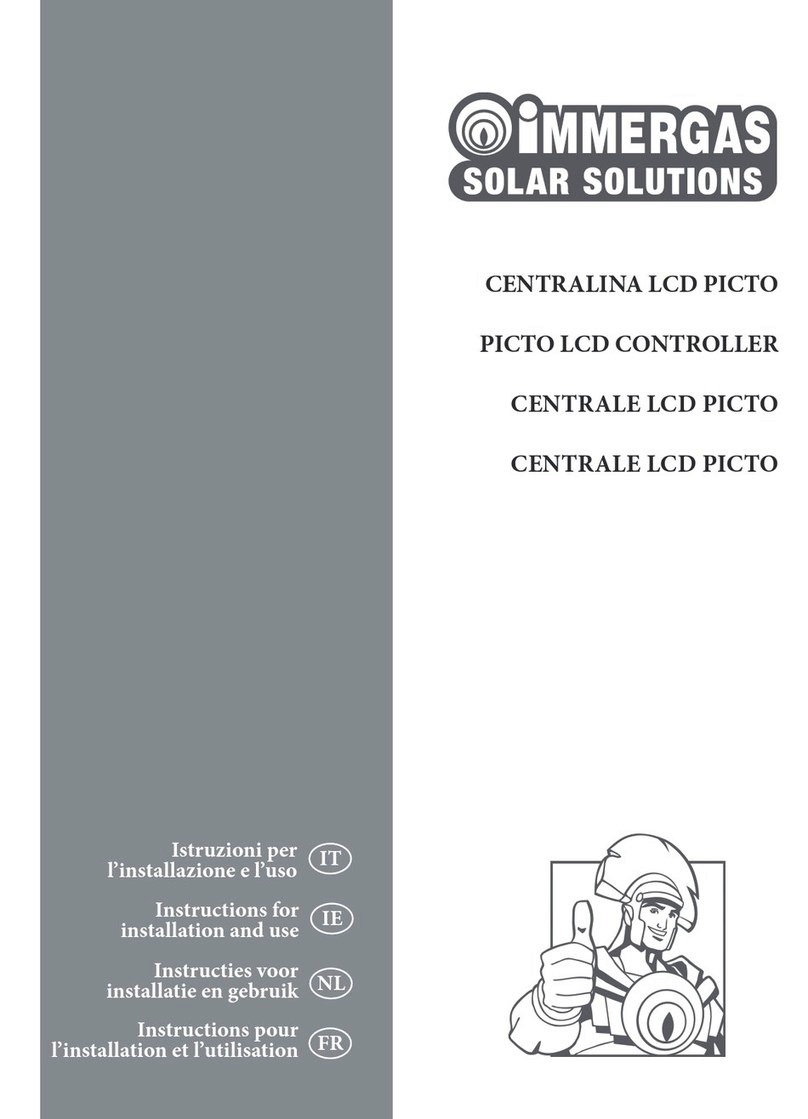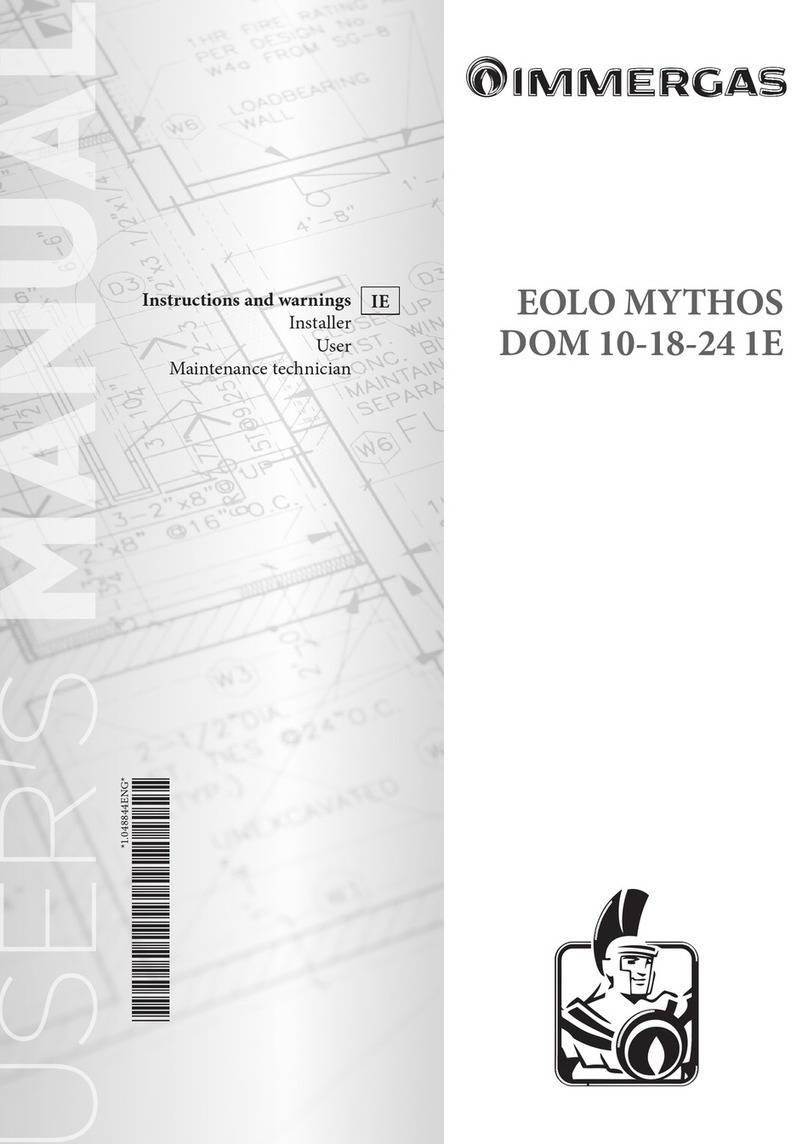1-4 1-5
6 - IE
INSTALLATORUSERTECHNICIAN
1.6 OUTDOOR INSTALLATION IN
PARTIALLY PROTECTED AREA.
N.B.: a partially protected area is one in which the
appliance is not exposed to the direct action of the
weather (rain, snow, hail, etc..)..
• Conguration type B, open chamber and
forced draught.
Using the relevant cover kit direct air intake is
possible (Fig. 1-7) and ue gases are exhausted
into a single ue or directly to the outside. In this
conguration it is possible to install the water
heater in a partially protected place.
In this conguration the water heater is classied
as type B22.
With this conguration:
- air intake takes place directly from the room
in which the appliance is installed (outdoor);
- the ue exhaust must be connected to its own
individual ue or channelled directly into the
external atmosphere.
The technical regulations in force must be
respected.
• Cover kit assembly (Fig. 1-6). Remove the
two plugs and the gaskets present from the two
lateral holes with respect to the central one.
Position the diaphragm on the discharge hole:
Caesar 14 3 E: Ø 45 present inn the water
heater.
Super Caesar 17 3 E: Ø 44 present in the
thermoformed kit.
Install the Ø 80 outlet ange on the central
hole of the water heater, taking care to insert
the gasket supplied with the kit and tighten
by means of the screws provided. Install the
upper cover, xing it using the screws and
relevant gaskets present in the kit. Fit the 90° Ø
80 curve with the male side (smooth) into the
female side (with lip seals) of the Ø 80 ange,
up to stop.Cut the gasket in the relevant groove
at the desired diameter (Ø 80), run it along the
curve and x it using the sheet steel plate. Fit
the male end (smooth) of the exhaust terminal
into the the female end of the bend 90° Ø 80,
making sure that the relevant wall sealing
plate is already tted; this will ensure hold and
joining of the elements making up the kit.
• Coupling of extension pipes. To install push-
tting extensions with other elements of the
flue extraction elements assembly, proceed
as follows: Couple the pipe or elbow with the
male side (smooth) in the female side (with lip
seal) to the end stop on the previously installed
element. is will ensure sealing eciency of
the coupling.
Max. length of exhaust duct. The flue pipe
(vertical or horizontal) can be extended to a max.
length of 12 straight metres(Fig. 1-21). To prevent
problems of ue gas condensate in the exhaust
pipe Ø 80, due to ue gas cooling through the
wall,the length of the pipe (not insulated) must
be limited to just 5 m.
Example of installation with direct vertical
terminal in partially protected location. When
the vertical terminal for direct discharge of
combustion products is used, a minimum gap
of 300 mm must be le between the terminal
and the balcony above. e height X+Y+Z+W
evaluated with respect to the balcony above,
must be equal to or more than 2000 mm. (Fig.
1-8). e term W must only be considered if the
balcony above has closed balustrade (W=0 if the
balustrade is open).
• Conguration without cover kit (water heater
type C).
By leaving the side plugs tted, it is possible
to install the appliance externally, in partially
covered places, without the cover kit. Installation
takes place using the Ø60/100 and Ø80/125
concentric horizontal intake/ exhaust kits. Refer
to the paragraph relative to indoor installation. In
this conguration the upper cover kit guarantees
additional protection for the water heater. It is
recommended but not compulsory.
1.5 IMMERGAS FLUE SYSTEMS.
Immergas supplies various solutions separately
from the water heaters regarding the installation
of air intake terminals and ue extraction, which
are fundamental for water heater operation.
Important: the water heater must only be
installed together with an original Immergas
air intake and ue gas exhaust system. is
system can be identied by an identication
mark and special distinctive marking bearing
the note: “not for condensing boilers”.
e ue exhaust pipes must not be in contact with
or be near to ammable materials. Moreover,
they must not pass through buildings or walls
made of ammable material.
Positioning of double lip seals. For correct
positioning of lip seals on elbows and extensions,
follow the direction of assembly given in gure
(Fig. 1-4).
• Resistance factors and equivalent lengths.
Each ue extraction system component has
a Resistance Factor based on experimental
tests and specified in the table below. The
resistance factor for individual components is
independent from the type of water heater on
which it is installed or the actual dimensions.
It is, however, conditioned by the temperature
of the uids that pass through the pipe and
therefore varies according to applications for
air intake or flue exhaust. Each individual
component has a resistance corresponding to
a certain length in metres of pipe of the same
diameter; the so-called equivalent length,
obtained from the ratio between the relative
Resistance Factors. All water heaters have an
experimentally obtainable maximum Resistance
Factor equal to 100.e maximum Resistance
Factor allowed corresponds to the resistance
encountered with the maximum allowed pipe
length for each type of Terminal Kit. This
information enables calculations to verify the
possibility of various congurations of ue
extraction systems.
Diaphragm installation. For correct functioning
of the water heater, a Ø 45 diaphragm must be
installed on the outlet of the sealed chamber and
before the intake and exhaust pipe for the “Caesar
14 3 E” model and a diaphragm of Ø 46 for the
“Super Caesar 17 3 E” model (Fig. 1-9).
N.B.: the diaphragm is supplied as per standard
with the water heater.
Upper lid
